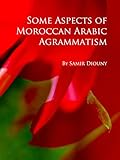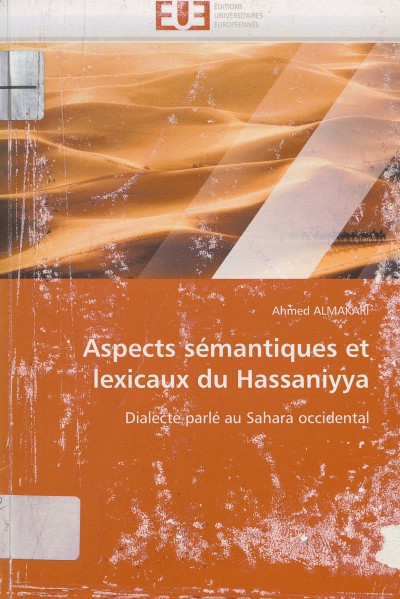Some aspects of Moroccan Arabic agrammatism [Texte imprimé] / by Samir Diouny
نوع المادة : نصتفاصيل النشر:Newcastle upon Tyne : Cambridge Scholars, 2010وصف:1 vol. (194 p.) : ill. ; 22 cmتدمك:
نصتفاصيل النشر:Newcastle upon Tyne : Cambridge Scholars, 2010وصف:1 vol. (194 p.) : ill. ; 22 cmتدمك:- 9781443821551
- 1443821551
- 417.964 20A
- 417
| نوع المادة | المكتبة الحالية | رقم الطلب | رقم النسخة | حالة | تاريخ الإستحقاق | الباركود | |
|---|---|---|---|---|---|---|---|
|
|
Bibliothèque centrale En accès libre | 417 / 258 (إستعراض الرف(يفتح أدناه)) | 1 | المتاح | 000002892559 |
Browsing Bibliothèque centrale shelves, Shelving location: En accès libre إغلاق مستعرض الرف(يخفي مستعرض الرف)
Bibliogr. p . 169-188
Preliminaries -- Historical review of aphasia studies -- Syntactic accounts of agrammatism -- Structural properties of Moroccan Arabic and linguistic theory -- Methodology, materials and procedures -- Results -- Summary and discussion -- Conclusion
"This book is a contribution to the ongoing debate in agrammatism, an acquired language disorder resulting from left hemisphere brain damage. The aim of the book is to give a comprehensive account of agrammatism and outlines and critically examines the different accounts of agrammatic production and asyntactic comprehension, to address morphological and structural properties of Moroccan Arabic agrammatic speech, and to put under scrutiny Friedmann and Grodzinsky's (1997) syntactic account of tense and agreement in production and across modalities. The book attempts to answer two important research questions: are tense and agreement dissociated as predicted by the Tree-Pruning Hypothesis (Friedmann and Grodzinsky, 1997); and, is the tense/agreement dissociation 'production-specific', or does it extend to comprehension and grammaticality judgment. A third objective of the book is to examine the comprehension abilities of four Moroccan Arabic-speaking agrammatic subjects in the light of the Trace Deletion Hypothesis (Grodzinsky, 1995 a, b). A major research question is whether or not active sentences and subject relative sentences are understood better than object relative sentences. The book takes the view the tense/agreement dissociation reported for Hebrew (Friedmann and Grodzinsky, 1997) and German (Wenzlaff and Clahsen, 2003) can be replicated in Moroccan Arabic. However, the syntactic account as outlined in Friedmann and Grodzinsky (1997) cannot account for the tense/agreement dissociation as Moroccan Arabic has the agreement node above the tense node. In addition, the Trace Deletion Hypothesis cannot account for the comprehension difficulties experienced by the four Moroccan Arabic-speaking agrammatic subjects; the case is so because both subject relatives and object relatives are understood below chance level. Based on data collected through different experimental methods, it is argued that the deficit in agrammatism cannot be explained in terms of a structural account, but rather in terms of a processing account. Access to syntactic knowledge tends to be blocked; grammatical knowledge, however, is entirely intact."--Publisher's description
لا توجد تعليقات على هذا العنوان.











